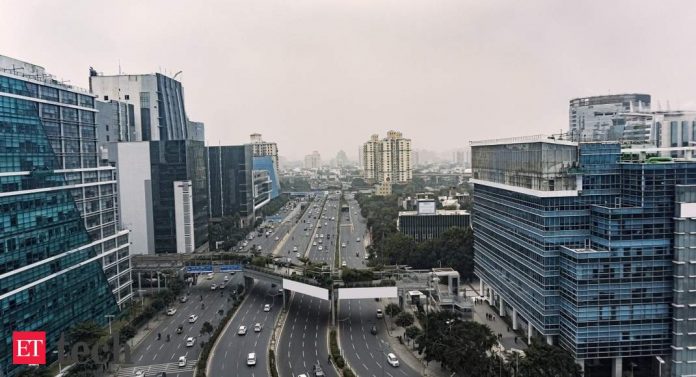
This article has been written by Sunita Ahuja, pursuing a Diploma in Legal English Communication – oratory, writing, listening and accuracy from LawSikho and edited by Shashwat Kaushik.
It has been published by Rachit Garg.
Introduction
When demonetisation 2.0 was announced on May 19, 2023, the mind went back to November 8, 2016. At that time, Rs. 500 and Rs. 1000 notes became no longer valid tender from the next day onwards. There was chaos and long lines outside all banks for many days and months.
On May 19, 2023, the Reserve Bank of India announced that Rs. 2000 notes will be valid legal tender till September 30, 2023, which means that Rs. 2000 notes will not be legal tender from October 1, 2023 onwards.
However, it will be a boost to the Indian economy if we implement it strategically. We can do this by recovering black money and fake currencies, promoting growth in digital transactions, encouraging people to file Income Tax Returns and curbing anti national terrorism activities, thereby pushing our economic growth. The success of any demonetisation mainly depends on its effective implementation.
Definition
A process in which certain currencies are no longer legal tender. This announcement is made either by the government or by the Reserve Bank of India.
Demonetisation refers to the act of invalidating a country’s existing currency notes or coins of a certain denomination. It can be replaced either with new notes or coins of the same denomination or another denomination. It is mostly initiated either by the government or the Reserve Bank of India.
Background
In India, the demonetisation process has taken place three times.
- 1946: Rs. 1,000, Rs. 5,000, and Rs. 10,000 currency notes were demonetised to control hoarding of black money and illegal transactions.
- 1978: Rs. 1,000, Rs. 5,000, and Rs. 10,000 banknotes were demonetised to combat corruption, black money, and tax evasion.
- 2016: On November 8, 2016, Prime Minister Narendra Modi announced the demonetisation of Rs. 500 and Rs. 1,000 banknotes to fight against black money, corruption, and counterfeit currency.
Now, the Reserve Bank of India has announced on May 19, 2023, that Rs. 2000 notes will be legal tender till September 30, 2023 and after that, they will not be valid legal tender. It is also being called ‘Demonetisation 2.0.’
The Reserve Bank of India announced that, with effect from May 20, 2023, 2000 notes can be exchanged at their regional office and in other banks. The Reserve Bank of India has further said that these notes can either be exchanged or deposited until September 30, 2023. However, there is a capping limit of Rs. 20000/- can be exchanged in a day. This means that in a day, a person can deposit 10 notes of Rs.20000/- only.
Why was the decision to demonetise announced by Reserve Bank of India
The RBI says that the Rs. 2000 denomination bank notes were introduced in November 2016 to meet the currency requirements of the economy after the withdrawal of legal tender of Rs. 500 and Rs. 1000 denomination notes in circulation at that time. Subsequently, bank notes in other denominations became adequately available and hence this objective was met. Therefore, printing of Rs. 2000 notes was stopped in 2018-19. Currently, Rs. 2000 denomination bank notes are not commonly used by the general public. The total value of these banknotes in circulation has declined from ₹6.73 lakh crore at its peak as of March 31, 2018 (37.3% of Notes in Circulation) to ₹3.62 lakh crore, constituting only 10.8% of Notes in Circulation on March 31, 2023. The stock of other denominations of bank notes is enough to meet the requirements of the people. This decision is in pursuance of the “Clean Note Policy,” a policy to ensure the availability of good quality notes to members of the public. The objective of this policy of the Reserve Bank of India is to give good quality currency notes and coins to the citizens and to withdraw the soiled notes that are currently in circulation.
Reasons to announce demonetisation
There are various reasons to announce demonetisation, which are listed below:
- Recovery of black money
The main step in demonetisation is the recovery of black money by hoarders to retrieve undisclosed wealth held illegally. This will strengthen the economy by increasing tax revenues and ensuring a fair and equitable distribution of resources in society.
- To curb anti-national and terrorist activities
The government continuously strives to curb anti-national and terrorism activities by implementing robust security measures and enhancing surveillance. Through demonetization, the government aims to disrupt illegal financial channels used by terrorist organisations, which forces them to look for alternative means of financing.
- Rise in income tax filers
The government intends to encourage more people to file their Income Tax Returns through this demonetisation. A huge rise in income tax filers was seen post demonetisation in 2016. For the individuals who were evading tax before 2016, notices were sent to them by the Income Tax Department to give them accountability for the notes deposited in the banks.
- Digitisation of financial transactions
There is a basic shift from traditional cash-based transactions to electronic methods of payment through online payment, net banking, mobile wallets, digital banking, etc. Digitisation offers many benefits, like speed, convenience and efficiency. It accelerates economic growth and reduces the need for physical currency, thereby enhancing transparency.
- Reduction in fake money in circulation
Demonetisation plays a key role in reducing the fake money in circulation. By invalidating high value denomination notes, counterfeit currency printing will be disrupted, which will decrease the circulation of fake money. This will have a positive impact on the overall economy, which will strengthen the economy’s integrity.
- To use cashless transactions frequently
With the use of digital payment methods like credit cards, debit cards, mobile wallets, and online transactions, it facilitates smooth transactions. Cashless transactions have become very convenient and enhance transparency, as digital records are easy to maintain. It reduces the risks associated with physical cash and also ensures transparency in financial transactions.
The Supreme Court’s verdict

On January 2, 2023, in Vivek Narayan Sharma vs. Union of India, the Supreme Court of India upheld the decision of demonetisation by the Mr. Naredra Modi led Government with a 4.1 majority, saying that there was no flaw in the decision making. The RBI has also supported demonetisation.
After Prime Minister Narendra Modi announced demonetisation of high-value currency notes of Rs 500 and Rs 1000 on November 8, 2016, a plea was filed in the Supreme Court of India challenging the decision on November 9, 2016. There were many writ petitions to challenge the decision in various High Courts. Transfer petitions were filed by the Union of India, seeking the transfer of all such Writ Petitions filed in the High Court to the Supreme Court of India. The Bench headed by then chief justice T. S. Thakur referred the question of validity of the decision and other questions to a larger bench of five judges for authoritative pronouncement on December 8, 2016. The Supreme Court observed that the initiative by the Central Government was targeted to address various issues, including the practise of hoarding black money, counterfeiting, terrorist activities, drug trafficking, fake currency, money laundering, and hawala transactions. It is beyond doubt that the said measure was well initiated. This measure demonstrates foresight. The best intentions and noble objects for the betterment of the Nation were put forth. The measure has been regarded as unlawful only on a purely legalistic analysis of the relevant provisions of the Act and not on the objects of demonetisation.
Current scenario
RBI has not printed Rs. 2000 notes from the past 3 years during 2019-20, 2020-21 and 2021-22 as per the RTI, which was replied by Bharatiya Reserve Bank Note Mudran (P) Ltd. It further disclosed that Bharatiya Reserve Bank Note Mudran (P) Ltd. printed 3,542.991 million pieces of Rs 2,000 notes in the financial year 2016-17, which drastically came down to 111.507 million notes in 2017-18 and was further reduced to 46.690 million notes in 2018-19.
RBI also gave instructions to the Banks that if any 2000 notes are deposited in the bank, that note will not be circulated by the bank for circulation and has to be deposited back with RBI. Only 10% of currency notes are in circulation. Generally, most working class people do not have any Rs. 2000 notes with them. So there is no panic mode among the public.
How this demonetisation is different and boosts the Indian economy
However, this demonetisation is different than the last one, which is explained below :
People in 2016 had to make long queues in the banks for note exchange as the Government had banned notes of 500 and 1000 with immediate effect from 08-11-2016 onwards, and they no longer became legal tender.
Now people can shop for capital goods of their choice with the 2000 notes denomination. The seller cannot refuse to take the Rs. 2000 note, as it is still a valid tender. Only the small vendors will be reluctant to take the 2000 notes because of exchange problems. But they can turn this opportunity into a good business strategy and increase their turnover, which in turn will help our economy.
Digitisation helps the Indian economy move forward in such situations and slowly, India has reached the stage where the smallest shopkeeper / vendor is using digital transactions, which has helped them increase sales. It has become very convenient. People don’t have to carry money and withdraw money from banks by standing in long queues.
Conclusion
Many people feel that it will have a disruptive effect on our economy. There is also a question as to why common people are inconvenienced again. Also, why is it being introduced again when almost 99% of the currency notes are back at the Reserve Bank of India. Currently, there will be a sharp fall in GDP, thereby affecting its growth rate, but India will soon be the fastest growing economy in the world.
From past experiences, if executed strategically, it might yield several positive outcomes.
Firstly, it could curb the circulation of black money and illicit transactions, encouraging a shift towards transparent financial practises.
Secondly, encouraging citizens to adopt cashless transactions and digital payment methods would pave the way for a more efficient and accountable financial ecosystem. This could lead to a reduction in corruption, which will enhance investor confidence and strengthen the financial sector, thereby facilitating smoother transactions.
However, the success of demonetisation in 2023 depends on meticulous planning, seamless execution, and effective communication. A striking balance between the anticipated benefits and the challenges that come with such demonetisation remains essential to maximising the positive impact.
References
- https://byjusexamprep.com/upsc-exam/demonetisation-in-india#:~:text=Impact%20of%20Demonetisation%20in%20India,-Both%20positive%20and&text=Because%20of%20Demonetization%2C%20there%20is,impact%20on%20Demonetisation%20in%20India.&text=Digital%20transactions%20have%20increased%20over%20the%20years.&text=Large%2Dscale%20layoff%20in%20the%20unorganized%20sector
- https://www.outlookindia.com/business/is-it-demonetisation-2-0-here-s-all-you-need-to-know-about-withdrawal-of-rs-2-000-notes-news-287789
- https://www.outlookindia.com/business/demonetisation-the-decision-that-changed-the-face-of-india-s-economy-news-250362
- https://www.business-standard.com/article/current-affairs/no-new-rs-2-000-currency-notes-printed-from-2019-2022-says-rti-reply-122110801516_1.html
- https://www.studyiq.com/articles/demonetisation-2-0/
- https://indianexpress.com/article/india/supreme-court-demonetisation-noteban-case-verdict-live-updates-8355842/
- https://main.sci.gov.in/supremecourt/2016/37662/37662_2016_3_1501_40708_Judgement_02-Jan-2023.pdf
Students of Lawsikho courses regularly produce writing assignments and work on practical exercises as a part of their coursework and develop themselves in real-life practical skills.
LawSikho has created a telegram group for exchanging legal knowledge, referrals, and various opportunities. You can click on this link and join:
Follow us on Instagram and subscribe to our YouTube channel for more amazing legal content.










